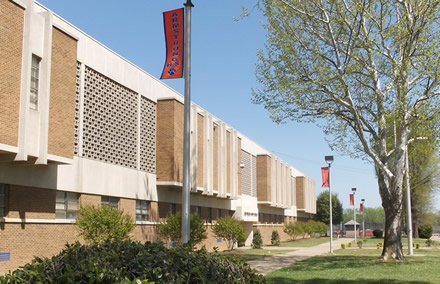Richmond School Board shelves school closings
Free Press staff report | 5/20/2016, 8:02 a.m.
Armstrong High School will not be closed.
Nor will four Richmond elementary schools — Cary, Overby-Sheppard, Southampton and Swansboro.
And there will be no merger of two alternative schools.
After weeks of threatening closures and mergers and generating public support in lobbying Richmond City Council to pump more money into its coffers, the Richmond School Board backed down.
In a 6-3 vote Monday, the School Board rejected any further discussion of closing buildings to help eliminate 5,000 empty seats.
Instead, the board might look elsewhere to find the estimated $11 million needed to balance its approved budget. That money is needed to cover the cost of Superintendent Dana T. Bedden’s academic improvement plan and meet other needs.
The needed money could come from new proposals Dr. Bedden and his chief financial officer, David Myers, presented at the meeting for the board to consider.
Examples of those money-saving proposals include increasing class sizes by an average of one student to shave 43 full-time teaching positions to save $3 million; spreading out a plan to improve pay for veteran teachers over three years to save $1.4 million; and using $3 million in savings from using substitutes to fill other vacant teacher positions.
Other proposals would eliminate $1.2 million in technology upgrades for schools and $1.9 million in other previously approved initiatives, such as hiring Spanish-speaking social workers and information system operators.
Another option would involve scrapping or delaying the entire $7.5 million needed to fund Dr. Bedden’s plan to improve academics, upgrade programs and build capacity. The school closings were proposed solely as a way to pay for that plan.
Board Chairman Jeffrey M. Bourne, 3rd District, said the final budget decisions are likely to be made when the nine members gather again Monday, May 23, to continue talks.
Some decisions already have been made, such as slashing bus service to middle and high school students by creating hubs at elementary schools in the next school year to save $800,000; razing the old Elkhardt Middle School to save $50,000 a year; and closing two administrative buildings on North Side to save $300,000.
The school closing proposals — designed to provide $3 million in savings — had galvanized teachers, parents and students. They repeatedly showed up to council meetings to plead for more money for schools.
In the end, the council managed to only come up with $5.5 million extra, far short of the $16.2 million the School Board had sought.
Including state funding, the council-approved school budget for the fiscal year beginning July 1 includes $280.3 million for public education — a 3.3 percent increase from current spending, but far less than the $292 million the School Board asked for in the budget it sent to the mayor and council. (Those totals do not include at least $61 million in additional federal funds for programs ranging from Head Start to Title 1 remediation.)
If Dr. Bedden’s plan is to survive, the board must eliminate other items or find savings.
Two weeks ago, School Board member Tichi Pinkney Eppes, 9th District, predicted there would be no school closings and urged her board colleagues to drop the charade.
Shot down then, Ms. Pinkney Eppes had her “I told you so” moment when Mr. Bourne and four other board members joined in killing the school closing plan.
Shonda Harris-Muhammed, 6th District, led the effort this time. She said the proposed closings were too rushed and urged the board to reject the idea until there was time to rezone school districts.
Along with Mr. Bourne and Ms. Pinkney Eppes, others voting to kill the closing proposal were Mamie Taylor, 5th District; Donald Coleman, 7th District; and Dr. Derik Jones, 8th District.
The three other board members wanted to keep the closing option on the table given the size of the budget gap that remains, including newcomer J.E. “Dawson” Boyer, 1st District; Kimberly B. Gray, 2nd District; and Kristen Larson, 4th District.
Even as the board wrestled with its operating budget, one thing was unmistakably clear — there will be virtually no money to deal with school building decay.
The only funds Mayor Dwight C. Jones proposed and the council approved for capital improvements was $5 million, though the council also earmarked another $4 million to renovate Overby-Sheppard Elementary to prevent its closure and the potential damage that would cause to a new city-backed subdivision called Highland Grove that surrounds the school.
That $9 million total is not even close to the $41 million the School Board sought to replace roofs, deal with faulty heating and cooling systems, upgrade plumbing and electrical systems, cover the cost of leasing buses and deal with other structural problems.
The disparity between the money the school system needs to maintain buildings and the funding the city expects to provide is only projected to grow.
During the five-year period between 2017 and 2021, the council has approved providing $14.6 million in new capital funds. The School Board’s request: $94.5 million for that five-year period — an $80 million difference.






